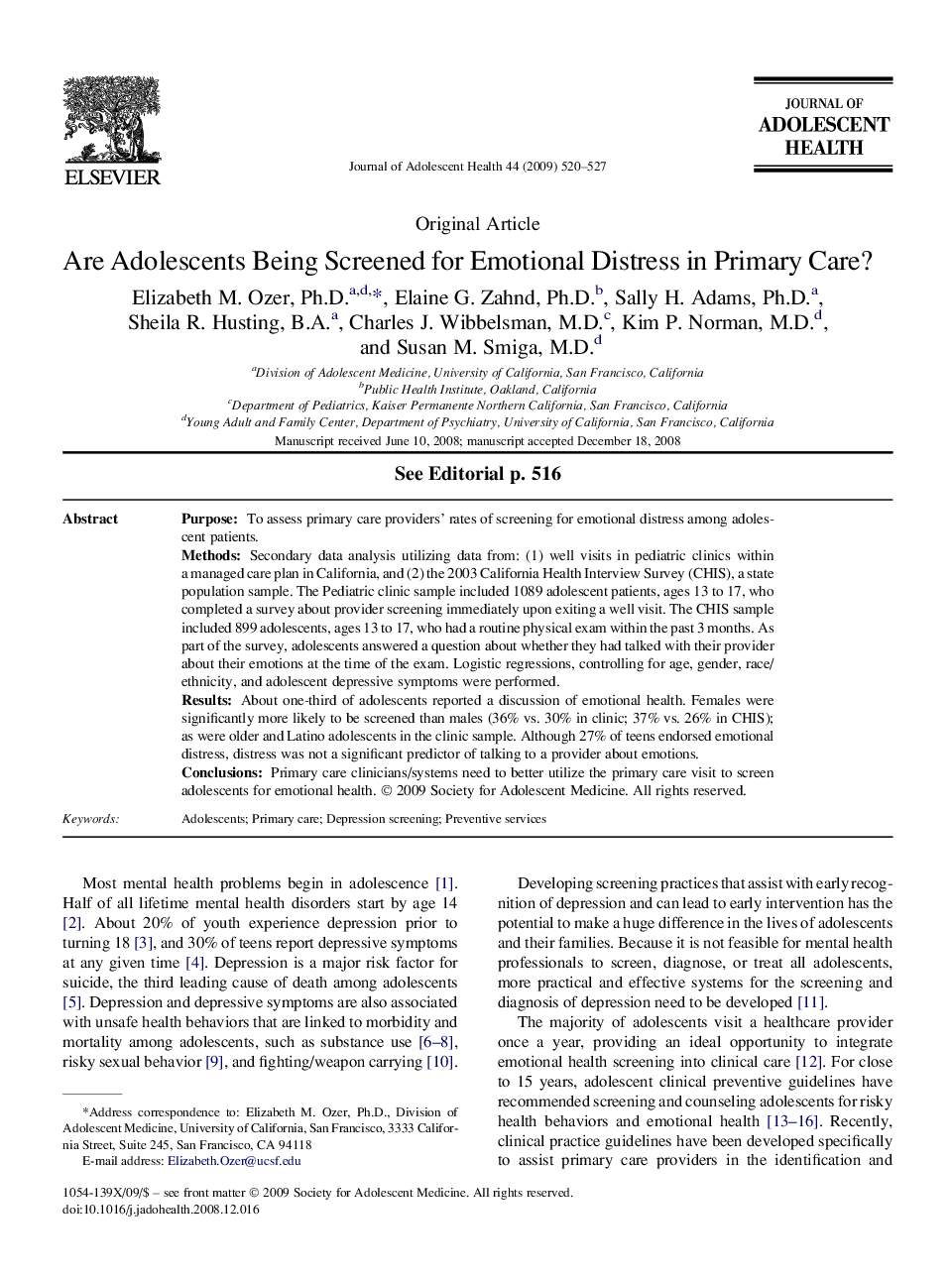| Article ID | Journal | Published Year | Pages | File Type |
|---|---|---|---|---|
| 1080233 | Journal of Adolescent Health | 2009 | 8 Pages |
PurposeTo assess primary care providers’ rates of screening for emotional distress among adolescent patients.MethodsSecondary data analysis utilizing data from: (1) well visits in pediatric clinics within a managed care plan in California, and (2) the 2003 California Health Interview Survey (CHIS), a state population sample. The Pediatric clinic sample included 1089 adolescent patients, ages 13 to 17, who completed a survey about provider screening immediately upon exiting a well visit. The CHIS sample included 899 adolescents, ages 13 to 17, who had a routine physical exam within the past 3 months. As part of the survey, adolescents answered a question about whether they had talked with their provider about their emotions at the time of the exam. Logistic regressions, controlling for age, gender, race/ethnicity, and adolescent depressive symptoms were performed.ResultsAbout one-third of adolescents reported a discussion of emotional health. Females were significantly more likely to be screened than males (36% vs. 30% in clinic; 37% vs. 26% in CHIS); as were older and Latino adolescents in the clinic sample. Although 27% of teens endorsed emotional distress, distress was not a significant predictor of talking to a provider about emotions.ConclusionsPrimary care clinicians/systems need to better utilize the primary care visit to screen adolescents for emotional health.
